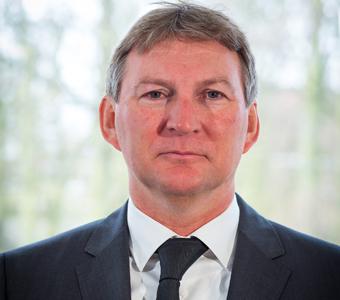With geopolitical tensions and ongoing military conflicts, 2025 can only be described as an “unsettled” and volatile year. In a globalised world, conflicts in one nation affect neighbours and trade partners. The recent Annual Nato Summit at The Hague demonstrates the levels of security that have to be put in place at a high profile global event to counter the threat of a war and terrorism event.
To ensure security, countries sharing values of liberty, democracy, human rights, and rule of law convened as NATO to secure lasting peace. In June, more than 8,500 delegates convened in the Netherlands for the annual NATO summit at The Hague World Forum to discuss national security and strengthen the alliance. Topics included global security and terrorism, leading to announcements of new priorities. Extensive security measures were imposed by police, the Royal Netherlands Marechaussee, Ministry of Defence, and the National Coordinator for Counterterrorism and Security (NCTV). These included partial or full closures of roads, rail, air, and marine routes, fencing around the venue, and special entry permits.
As a NATO member, the Netherlands benefits from better protection against threats such as war, terrorism, and cyberattacks. Of the delegates, 135 required special security, including government leaders and ministers. To ensure safety, 27,000 police officers, 10,000 defence personnel, and 5,000 marechaussees were deployed—the largest security operation in Dutch police history. This enabled the summit to proceed safely.
Role of the NCTV at the NATO summit
Security organisations prepared extensively, conducting exercises on scenarios like cyber threats, espionage, sabotage, digital disturbances, and large-scale unrest. The NCTV coordinated and aligned security measures, implementing a drone ban around the World Forum and focusing heavily on cybersecurity. A spokesperson said, “The NATO summit demanded a lot from us, but also from all the parties we worked with. It was a major logistical challenge, and we were prepared for everything. A safe summit is what NCTV stands for.”
Right to demonstrate
Despite large security operations, the right to peaceful protest remained. Restrictions applied only where security risks arose. The World Forum area, with the highest risk profile, was limited to summit participants. Pre-identified locations nearby and elsewhere in the city hosted demonstrations safely. Precautions included road closures to manage potential escalation.
Physical and digital threats
Beyond physical risks like extreme weather and terrorism, digital threats such as espionage, cyberattacks, and disinformation were major concerns – constituting a new form of sabotage sometimes called “state terrorism.”
Orange Shield
To safeguard the summit, the Netherlands launched its largest security operation, “Orange Shield,” deploying over 10,000 military and police personnel, combat helicopters, maritime patrols, bomb squads, and air defence systems. Police conducted preventive searches in high-risk areas; the Marechaussee mainly operated at Schiphol Airport. Cooperation among all services ensured the summit passed without incidents.
Netherlands’ priorities and focus areas for 2025 and beyond
Hosting a successful NATO Summit, the Netherlands demonstrated strong security capabilities. The General Intelligence and Security Service (AIVD) and Military Intelligence and Security Service (MIVD) are committed to maintaining momentum, identifying threats, setting priorities, and developing plans.
The AIVD and MIVD see China’s assertiveness as a growing threat, particularly economic security through cyberattacks on key tech companies and government departments. The services are investing in future-proof intelligence and economic security research to understand China’s activities and intentions.
Additionally, the AIVD and MIVD see Russia as a threat, observing that Moscow frames the war in Ukraine as part of a broader existential conflict with the West. The war in Ukraine is expected to continue over the coming year, and even if it ends, it is unlikely that Russia will give up its aggressive stance toward the West and increasingly manifest itself in a hybrid manner in Europe. The AIVD and MIVD predict the Netherlands may face increased espionage, sabotage, disinformation, influence operations, and military intimidation. Thus, the threat from Russia toward the Netherlands remains significant for the coming years.
While NATO countries keep their focus on Ukraine, professor and security expert Beatrice de Graaf warned of the joint threat from Russia and Iran. Signing a cooperation agreement for the next two decades, Russia and Iran aim to collaborate on intelligence and security services with plans to exchange military personnel and enhance cooperation in the oil and gas sector, posing a threat to the unity of NATO.
The Netherlands has demonstrated its unwavering commitment to national and international security. By successfully hosting the NATO summit and executing the largest security operation in its history, the country has shown its capacity to lead and collaborate on a global scale. The threat to national security is predicted to continue in 2026 and beyond. With threats ranging from conventional warfare to cyberattacks and disinformation, the role of intelligence services like the AIVD and MIVD will be critical in the years ahead.

